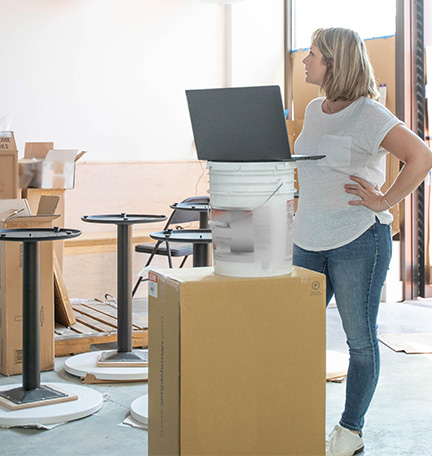By understanding your needs, the market, and the lease negotiation process, you can secure the best deal possible for your business.
Leasing office space has its own lingo and logistics, but with a bit of preparation, it can actually be a fairly straightforward process. Begin by defining your requirements by assessing the following factors:
- Function: How will the office space be used? Front-end office space will have different requirements than a back office or call center, for example.
- Location: Determine your desired geographic location. Consider the needs of your employees and your clients. Is it important to be close to your customers? Where are your employees traveling from? Do you need access to public transportation? Is being downtown essential to your office's ability to function and grow? Metro locations are usually more expensive than comparable suburban properties and charge more for parking.
- Design: Function informs design. John McGowan, executive vice president, corporate real estate for Regions Bank, manages the bank's 15 million square feet of branch, office, and operation space. He notes that it is important to think about efficiency and to approximate how many square feet per employee is needed. You'll want to consider aesthetics, but more important is facilitating a productive work environment. "The space needs to be functional, safe, and collaborative," he says. "Make sure it is built-out so your employees can communicate effectively and that it supports necessary technology solutions."
- Budget: Armed with a thorough understanding of your needs, you can begin to shop for office space. You'll most likely partner with a commercial real estate broker and a real estate attorney. Depending on the size of your business, you may also wish to enlist the help of an architect. Your team will assist in finalizing your requirements, assessing your budget, and educating you about the market.
Lease negotiation tips
Craig Ruoff, senior director, brokerage, at Cushman & Wakefield in Westchester County, New York, advises businesses owners to begin looking for new office space at least 12 to 24 months in advance. This is especially important if you're considering staying in your existing location, in which case you need to begin the process closer to 24 months prior to lease expiration. "If you determine your current space is ideal, you want to have time to renegotiate the lease to potentially save money. If you have less than a year left on your lease, you are what's called a captive tenant—an existing tenant with few alternatives," he cautions.
When negotiating the lease, options give you leverage. "Try to have three alternatives, all of which you would be thrilled to go to," Ruoff advises.
It's uncommon to find existing office space that perfectly fits your needs. Landlords typically provide a tenant improvement (TI) allowance for renovations. Look at this figure and your rental costs closely. "With many leases, if they give you a higher TI allowance, they are actually just raising the rental cost per square foot. It's a sliding scale," McGowan says.
One of the most difficult equations is calculating how much office space you actually need both now and to accommodate future growth. McGowan says that when he's leasing office space in a multi-tenant building, he'll often try to negotiate first review of any vacant space that becomes available. "That means we get to look at the space before another tenant comes along and decide if we'd like to expand," he says.
Depending on how your office lease is structured, operating expenses – costs required to keep the building running, such as janitorial services, trash removal, and heat and electric– will either be built into your base rent or billed separately. Ask for a breakdown of these figures, as well as real estate taxes and potential escalations, so you can budget and negotiate accordingly.
With preparation, you can secure the most cost-effective space possible, without sacrificing the productivity of your team. McGowan notes that, "The occupancy expense tends to be the second highest cost you incur after salary and benefits," so you have a real opportunity to make a substantial impact on your company's bottom line.











